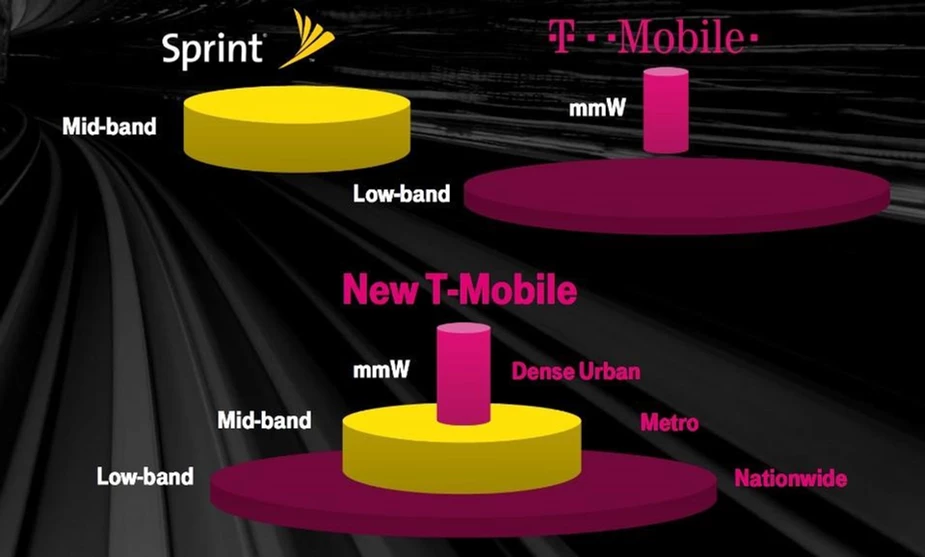The Sprint to 5G

Evolutions in telecom are like clockwork: once a decade something revolutionary happens. In the 1980s, the first nationwide mobile network operators (MNOs) appeared. In the 1990s, GSM (Global System for Mobile Communications) rolled out as a standard that became like the Bible for the industry. At the turn of the century, 3G was the new rage and, about ten years after that, 4G/LTE opened the floodgates for applications to transmit large quantities of data.
To begin the 2020s, another important progression in mobile broadband is underway: the rollout of 5G. This new technology has elicited various responses from business leaders, politicians, consumers, and technologists. Some point to the opportunity ahead: faster data speeds, vast applications for the Internet of Things (IoT), and improved coverage in densely populated areas. While others question the economics of it and whether reality will live up to the hype.
In our opinion, the promises of 5G are groundbreaking for everything from consumer devices, to autonomous vehicles, to augmented reality, to artificial reality, to healthcare monitors. However, 5G networks operating in the mmWave band are very expensive to deploy because they require a dense construction of towers within a specific area, which demands significant capital expenditure. To make 5G a reality, consumers, companies, and countries around the world will need to invest hundreds of billions of dollars to upgrade hardware, devices, and networks. This will provide a tremendous opportunity for companies and countries leading the way in these efforts to reap huge economic benefits over the next decade – or longer.
The Path to 5G Leadership
Over the past quarter, there have been four major developments with a material impact on the telecommunications space and the sprint to 5G:
1. Trade policies aimed at curtailing China’s ability to advance its 5G initiatives, specifically regarding Huawei, and increased urgency to deploy 5G networks due to Covid-19.
2. The FCC’s proposal to free up important C-band spectrum.
3. Recent news that the FCC is poised to approve Ligado Networks’ proposal to repurpose L-band spectrum for an IoT-focused 5G network.
4. The T-Mobile and Sprint merger, which was finally permitted by a federal judge after challenges from several states.
The first item listed above has the broadest implications for international companies and countries hoping to speedily deploy 5G networks, infrastructure, and devices. The main argument against Chinese leadership in the space is that they would have both the ability to set fifth generation wireless technology standards and have the upper hand in terms of data security (which has national security implications). Based on data coming out of China, including new investments and tower instillations, their leadership in the space has looked like a virtually foregone conclusion. However, one unexpected wildcard is the recent Covid-19 outbreak which could (at least marginally) slow momentum and tilt teeter the balance of power towards other countries like the United States.
Huawei, China’s largest telecommunications company that operates in over 170 countries, is a central figure in this debate as it has reportedly received over $75B in government subsidies to corner the 5G equipment market. As part of its broader trade and technology war against China, the United States counter-punched by leading a coalition of nations against the company, citing national security risks.
The recent outbreak of Covid-19, which originated in China, will likely add tension to the relationship between the United States and China when it comes to the rollout of 5G. Additionally, the surge in data consumption and need for excess bandwidth to handle this increase has amplified the urgency to make 5G networks readily and widely available. Which brings us to the other major developments over the last few months…
The second item listed above is also related to 5G leadership in the space and is an extremely touchy subject between satellite companies, the Federal Communications Commission (FCC), lawmakers, and large telecom operators. Without going into too much detail on the saga behind what’s become an immensely entertaining public debate, satellite companies with the license to operate in the C-band formed a coalition known as the C-Band Alliance or CBA to protect their rights – and economic interests.
So, what’s so important about this spectrum?
C-band spectrum, also known as mid-band spectrum or the “goldilocks band”, is uniquely suited to transmit larger amounts of data compared to low-band spectrum (i.e. 2G, 3G, and 4G) and over longer distances than high-band spectrum (i.e. mmWave or 5G++). Ajit Pai, chairman of the FCC, announced in a very anticipated speech that the FCC would be moving forward with a public auction for this spectrum in late-2020. While this is not the mmWave spectrum discussed earlier, access to this important mid-band spectrum will help US companies define 5G standards and roll-out nationwide networks. The macro implication of this is that the US could make large strides to catch up in a global race they have largely trailed up to this point.
Even more specific to the Internet of Things (IoT) industry is recent news that the FCC is poised to approve a spectrum application from Ligado Networks that would allow it to repurpose L-band spectrum for a 5G network. This proposed network would focus mainly on connecting low-power smart devices and other internet-of-things sensors. While the proposal has gained traction at the FCC, it has drawn staunch objections from the Defense Department and other industry officials. These parties claim it will drown out and deteriorate GPS signals, which could have negative consequences for aviation, military and commercial customers that utilize L-band spectrum for global positioning. While this proposal is relatively new, it’s worth keeping an eye on because the outcome will unquestionably have an impact on which technologies IoT devices can reliably connect on.
Additionally, the long-awaited merger between T-Mobile and Sprint was recently finalized, which will combine to become the largest telecommunications company in the United States. As a result of the merger, the new T-Mobile will become the first major U.S. carrier to have important assets in all three critical spectrum segments: low-band, mid-band, and millimeter wave.
The newly formed telecom behemoth still has a lot of work to integrate and utilize all three bands, however their merger clears the path for a single US telecom company to operate across the three bands. This will likely put pressure on AT&T, Verizon, and Dish (which is planning to launch its own telecom network as a result of the merger) to gobble up additional spectrum assets in order to remain competitive.
Conclusion
The race to 5G has moved at a much slower pace in the United States than many anticipated. This has allowed China and other nations to gain an upper hand in 5G leadership. However, with political and economic pressures weighing on China, along with increased urgency to deploy 5G networks as a result of Covid-19 and an imminent public auction that will free up important C-band spectrum for nationwide 5G deployments, the stars are aligning for the United States to make up ground in an important race that could direct global leadership in the new decade – and many decades to come.
While the rollout of these networks will take time (both in the US and abroad), wireless technologies such as NB-IoT and LTE-M are exciting existing technologies that also have vast implications for the Internet of Things (IoT). In our article titled “Why the Termination of NB-IoT Service in Japan Matters,” we discussed the significance of these technologies and why they are important for low-power devices in the IoT space, even as the race to 5G heats up.
Note: A modified version of this article was written by Teal’s Co-Founder, Michael Johnston, and originally appeared on Evergreen Gavekal and Real Clear Markets.
Recent Posts
CES 2026: The Connected Future, Through TEAL’s Lens
Teal Communications Staff2025-12-18T18:58:56+00:00
The Fastest Growing Company in the PNW isn’t an AI Startup… it’s TEAL
Teal Communications Staff2025-12-10T20:43:23+00:00
The Sky is the New Cell Tower: Satellites Are Reshaping the MNO Landscape
Teal Communications Staff2025-12-09T21:28:24+00:00




